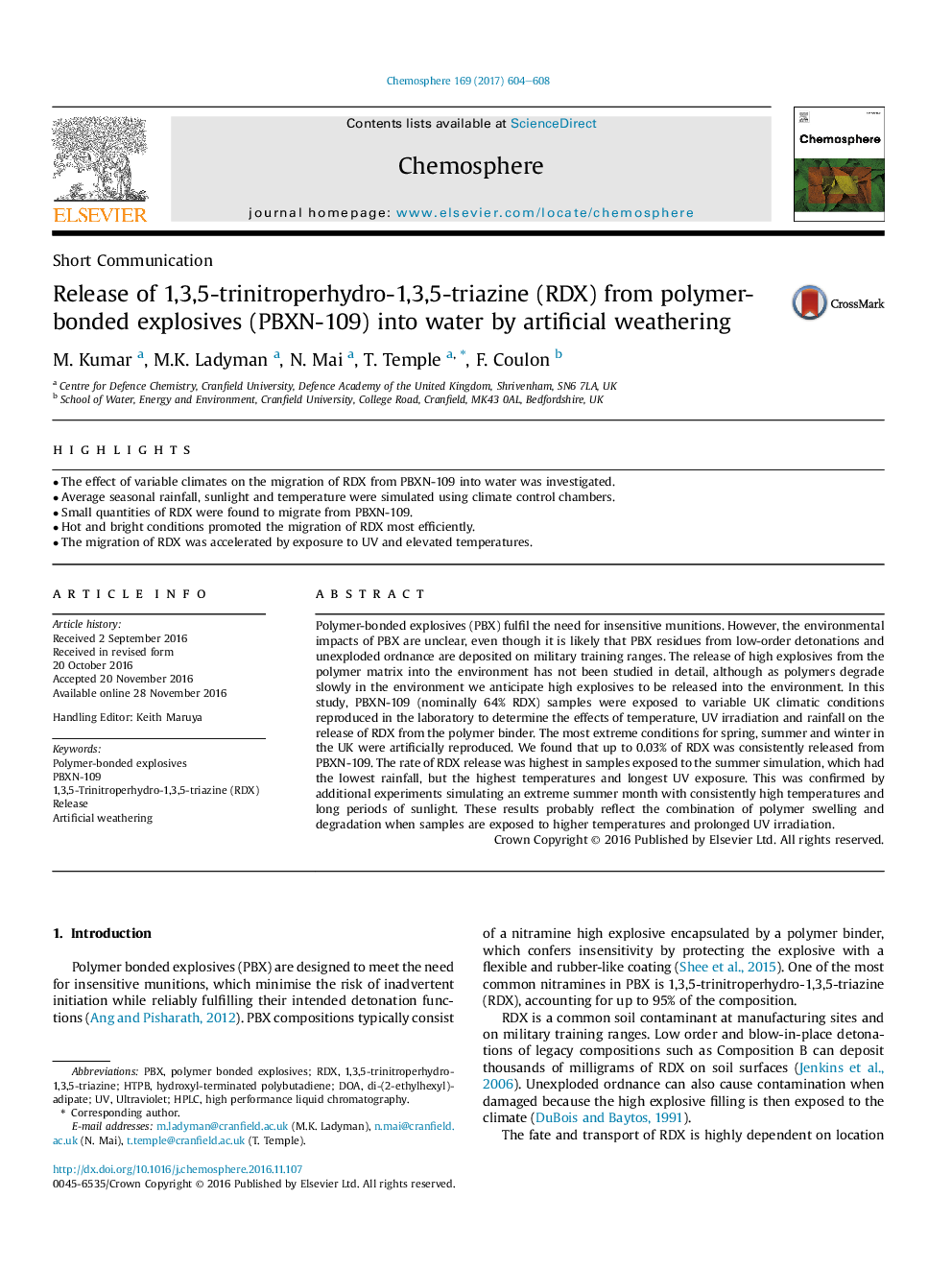| کد مقاله | کد نشریه | سال انتشار | مقاله انگلیسی | نسخه تمام متن |
|---|---|---|---|---|
| 5746996 | 1618802 | 2017 | 5 صفحه PDF | دانلود رایگان |

- The effect of variable climates on the migration of RDX from PBXN-109 into water was investigated.
- Average seasonal rainfall, sunlight and temperature were simulated using climate control chambers.
- Small quantities of RDX were found to migrate from PBXN-109.
- Hot and bright conditions promoted the migration of RDX most efficiently.
- The migration of RDX was accelerated by exposure to UV and elevated temperatures.
Polymer-bonded explosives (PBX) fulfil the need for insensitive munitions. However, the environmental impacts of PBX are unclear, even though it is likely that PBX residues from low-order detonations and unexploded ordnance are deposited on military training ranges. The release of high explosives from the polymer matrix into the environment has not been studied in detail, although as polymers degrade slowly in the environment we anticipate high explosives to be released into the environment. In this study, PBXN-109 (nominally 64% RDX) samples were exposed to variable UK climatic conditions reproduced in the laboratory to determine the effects of temperature, UV irradiation and rainfall on the release of RDX from the polymer binder. The most extreme conditions for spring, summer and winter in the UK were artificially reproduced. We found that up to 0.03% of RDX was consistently released from PBXN-109. The rate of RDX release was highest in samples exposed to the summer simulation, which had the lowest rainfall, but the highest temperatures and longest UV exposure. This was confirmed by additional experiments simulating an extreme summer month with consistently high temperatures and long periods of sunlight. These results probably reflect the combination of polymer swelling and degradation when samples are exposed to higher temperatures and prolonged UV irradiation.
Journal: Chemosphere - Volume 169, February 2017, Pages 604-608